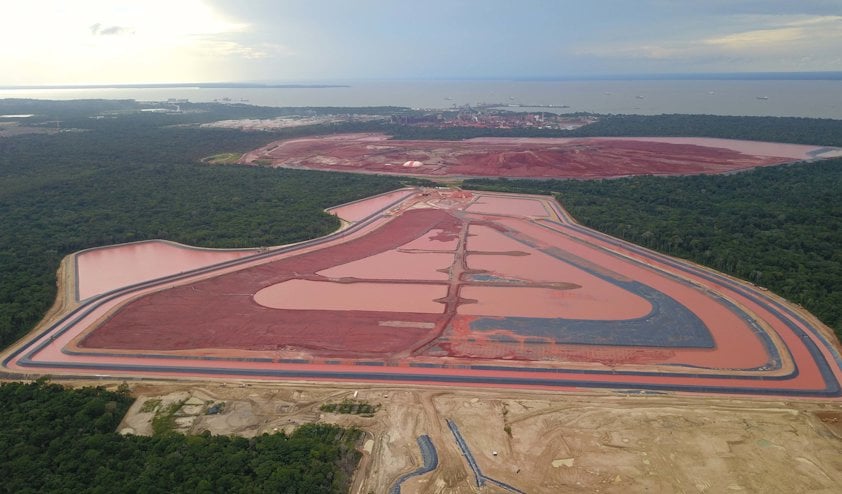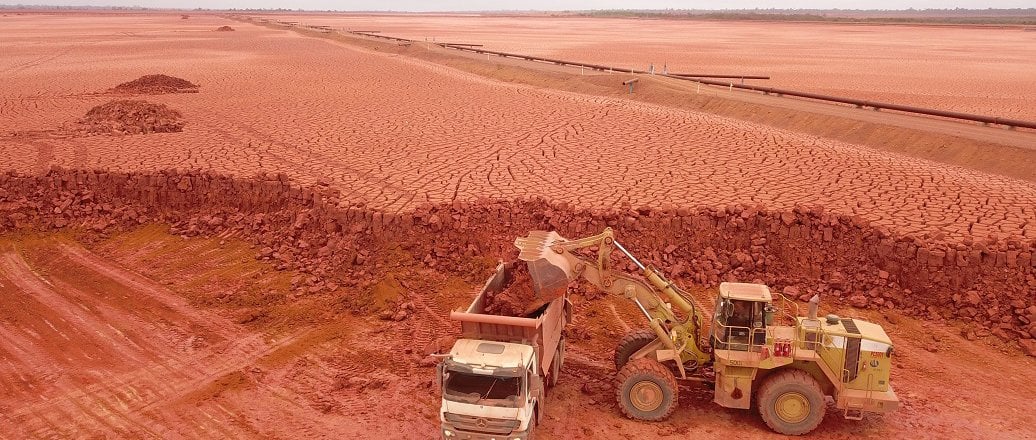Hydro hat stark in ein verbessertes Tailings-Management und modernste Technologie für die Behandlung und Entsorgung von Tailings investiert, die bei der Produktion von Bauxit und Aluminiumoxid in Brasilien anfallen.
Die Anlagen in Paragominas dienen der Lagerung von Rückständen aus dem Bauxitabbau. Während der Trocken- und Regenzeit durchlaufen die Rückstände einen Trocknungszyklus, der 30 bis 60 Tage dauern kann. Nach dem Trocknungsprozess hat das Material einen Feststoffgehalt von mindestens 60 Prozent und wird dann ausgehoben und wieder in den abgebauten Gebieten abgelagert. Diese Methode wird von Hydro als „Tailings Dry Backfill“ bezeichnet .
In Barcarena wird der Bauxitrückstand filtergepresst und in speziellen Tailings-Anlagen in der Aluminiumoxidraffinerie von Hydro in Alunorte gelagert, wobei ein verbessertes Trockenstapelkonzept zum Einsatz kommt. Durch den Einsatz moderner Pressfilter entsteht ein Bauxitrückstand mit einem sehr geringen Feuchtigkeitsgehalt von 22 Prozent, der effizienter gelagert werden kann. Dieser neue Ansatz bedeutet, dass der Rückstand im Vergleich zu unserer historischen Bauxitrückstandslagerstätte nur noch ein Viertel der Oberfläche einnimmt.

Wie verwaltet Hydro seine Tailings-Anlagen?
Die Tailings-Anlagen von Hydro werden im Einklang mit relevanten Vorschriften, behördlichen Compliance-Anforderungen, unternehmensinternen Standards und dem Rahmenwerk der International Council on Mining and Metal (ICMM) betrieben. In allen unseren Tailings-Anlagen arbeiten wir mit bewährten Verfahren und die Audits werden von unabhängigen Dritten durchgeführt. Hydro verpflichtet sich zur Umsetzung des Global Industry Standard on Tailings Management (GISTM), der das Ziel anstrebt, Mensch und Umwelt keinen Schaden zuzufügen.
Weitere Informationen darüber, wie Hydro ihr Commitment für "zero harm", die Tailings-Performance und das Management der Tailings stärkt, finden Sie in unserem Jahresbericht und in der Richtlinie zur Tailings Management Policy.
Was ist GISTM?
Der Global Industry Standard on Tailings Management (GISTM) ist ein robustes Rahmenwerk, das entwickelt wurde, um die Sicherheit, Nachhaltigkeit und das Gesamtmanagement von Tailings-Anlagen in der Bergbauindustrie zu verbessern. GISTM ist bestrebt, das ultimative Ziel zu erreichen, Mensch und Umwelt keinen Schaden zuzufügen. Dies wird durch einen integrierten Ansatz für das Tailings-Management verstärkt. Der Standard zielt darauf ab, katastrophale Ausfälle zu verhindern und die Sicherheit von Minenrückstandsanlagen auf der ganzen Welt zu erhöhen. Es stellt einen entscheidenden Wandel in Bezug auf Transparenz, Rechenschaftspflicht und den Schutz der Rechte der vom Projekt betroffenen Menschen dar.
Am 5. August 2020 haben sich alle ICMM-Mitglieder dazu verpflichtet, GISTM bis zum 5. August 2023 in Tailings-Anlagen einzustufen, die als "sehr hohe" oder "extreme" Folgenklassifizierung eingestuft sind. Alle anderen Tailings-Einrichtungen, die von Mitgliedern betrieben werden und sich nicht im sicheren Abschlusszustand befinden, werden bis zum 5. August 2025 gemäß dem Standard konform sein.
Aktualisiert: 26. April 2024







